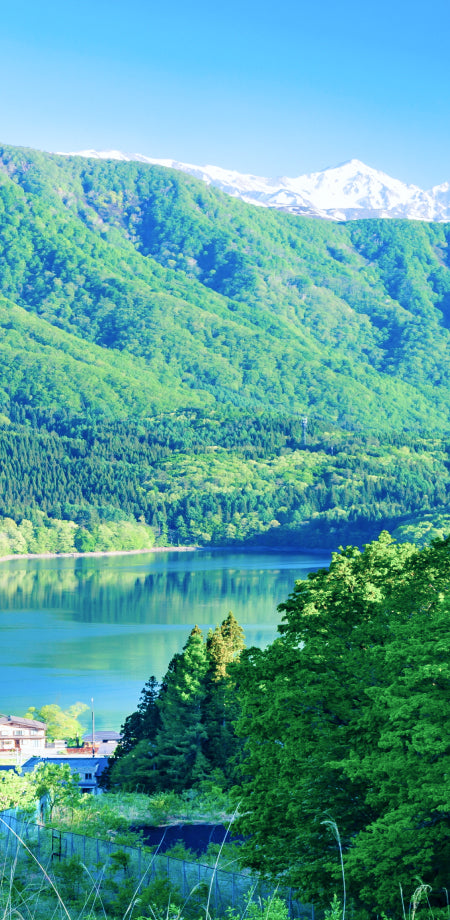投稿日:
更新日:
ShinshuWinter, traditional tradition

A wide north-south terrain surrounded by mountains Nagano The prefecture has long been cultivated by the harsh environment, and has developed a unique culture rooted in the climate and climate of various regions. In particular, in winter, as the winter solstice and New Year are marked by milestones, there are many historic traditional events held on each land. We will introduce traditional winter events that live in the region.
Vol.1: The Winter Solstice, praying for the resurrection of the sun and life, Toyama's Shimotsuki Festival
Vol.2: The New Year's masterpieces of Ueda's Yokkado Festival and the Future of Sumin
Vol.1 Toyama's Shimotsuki Festival praying for the resurrection of the sun and life at the winter solstice
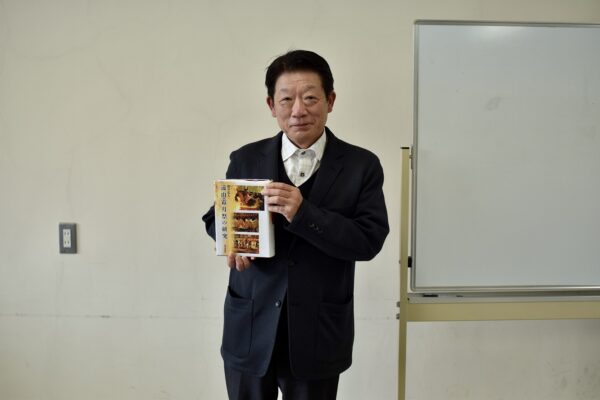
Kokugakuin University lecturer
SouthShinshuAdvisor of the Council for Promotion of Folklore Entertainment Inheritance
Sakurai Hiroto
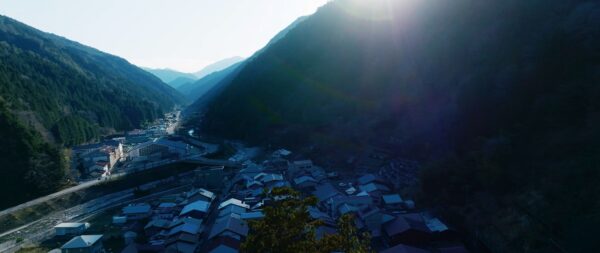
▲Toyamago is a region of mountainous valleys that stretch along the Toyama River, a tributary of the Tenryu River.

▲The kettle located in the center of the shrine building is filled with water made from a fusion of sacred water and fire.
Minami is considered to be a "treasure of folk arts."ShinshuMany of the precious traditions and customs that were born in the life of mountain villages have been handed down. One of them is the Toyamago Shimotsuki Festival, which is passed down in Toyamago, a hidden area at the southern tip of the prefecture. This is a festival of Yutate Kagura (a ritual where water is boiled in a cauldron and prayers for good health and a bountiful harvest), designated as an important national intangible folk cultural property.
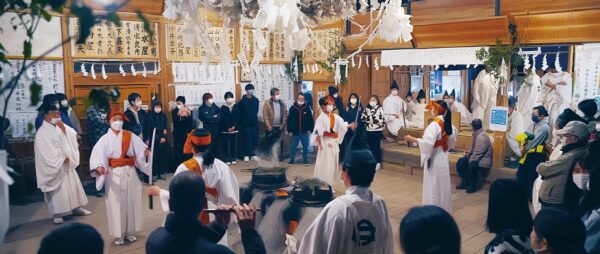
▲First, we will carry out a solemn "gods" that welcomes the gods of all over the country, and then carefully repeat the bathing space throughout the night.
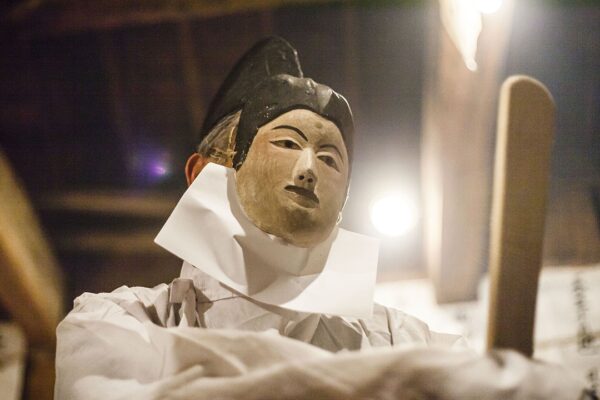
▲ Normally, at dawn, the spirit faces of the Toyama clan and the gods of the village appear.
During the dayTimesOne of the major features is that, around the winter solstice in December (Shimotsuki, the lunar calendar), when the vitality of all things weakens, the gods from all over the country invite hot springs to pray for the revival of life, and the spirit faith that calms the vengeful spirits of the Toyama clan, the lord, who is said to have been destroyed by peasant uprisings.
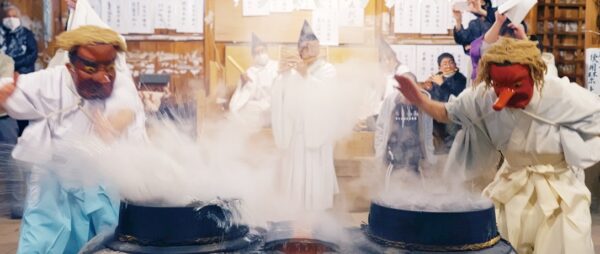
▲Pure your body by taking a bath in the hot water dedicated to the gods and wishing for a year of health

▲Casting spells, tying marks, and cutting 9 characters, leaving behind a mixed shape of Shinto and Buddha.
It is said that the only one in the country is the Toyama Shimotsuki Festival, where people cut boiling water in a kettle with their bare hands.

▲Yutate Kagura will be held at shrines in Kamimura and Minami Shinano, Iida City.

▲Each of four types differs in the number of kettles, hot water, number of surfaces, composition, and type of instrument.
Currently, the event is held at eight shrines in December with different days, and their characteristics vary depending on the region, and are divided into four types (systems).
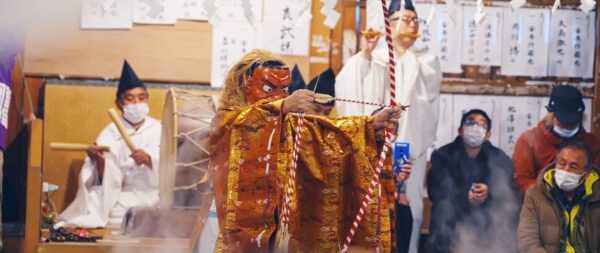
▲Tenbaku, who appears at the end of the mask, has a glittering costume and a bow and arrow. It is said to draw a bow towards the east, west, north, south, and the heavens and earth, and drive away evil spirits and evil spirits.
Its origins are unclear, but during the Kamakura period, when Tsurugaoka Hachimangu Shrine was at a prosperous peak, Toyama-go wasShinshuIt is said that it may have been brought as a manor ritual, as it was the only shrine's gods estate. "It is believed that the prototype of the present festival was created in the early Edo period," says Southern, a native of this area.ShinshuThis is Sakurai Hiroto, a leading expert in the research into folk performing arts.
"In Toyama-go, a mountainous area with a strict, closed natural environment, people are based on living a life where people feel close to the existence of gods and wish for peace. During the Edo period, famines, epidemics, and natural disasters occurred frequently, but people thought that this was the curse of the Toyama clan, and tried to overcome it by putting even stronger power into the festival. This is a unique festival across the country, as it allows you to closely follow the changes in the festival and the background of the times."
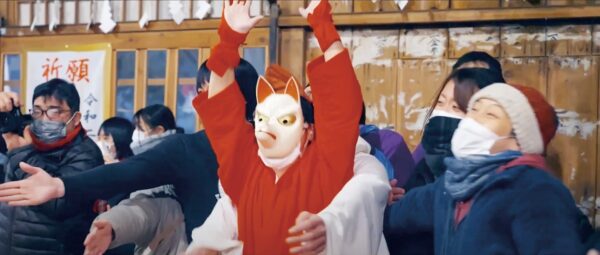
It was originally held at Hachiman Shrine, but since the mid-Edo period, it has now spread to shrines in various villages in Toyama-go, such as Suwa Shrine and Kumano Shrine. From the end of the Edo period to the Meiji period, the gods and high gods in the village began to be dedicated one after another, and the festival transformed into a festival that called for the blessing of the gods. After the war, elements of the people's enjoyment will also be added.
Recently, children who have learned dance at local elementary and junior high schools have actively participated in the festival. There is also a movement for young people to support the festival.
"I think if this festival, which can be said to be fostering a local identity, will suddenly fade away, the vitality of the region. There are concerns about a declining birthrate and an aging population, but the continued existence of the festival is proof that the region is healthy," says Sakurai.
"For the people of Toyama-go, this festival is a sense of fulfillment that has spent a year safely and a milestone in welcoming the New Year. That's why I hope that it's not just a rare festival, but rather that they can think of the present form of the festival and feel the depth of the festival. Minami-go is a place of learning that allows you to feel the ancient faith of Japan.ShinshuI would be happy if you could visit us."
Sakurai's words also showed the pride and mission to support local traditions.

Toyama Shimotsuki Festival
Iida City Kamimura/Minami Shinano
address:Nagano CityShinshu300-1 Shinmachi Hihara Nishi
phone:0265-53-3755(Cultural Property Protection Section, Iida City Board of Education Secretariat)
phone:0260-34-1071(Toyamago Tourism Association)
https://www.city.iida.lg.jp/site/bunkazai/shimotsukimatsuri.html(Iida City)
https://shimotsukimatsuri.com/
*This article is information as of November 2023.
vol.2 Ueda'sShinshuThe legendary decorating the Yokkado festival and the future of Sumin
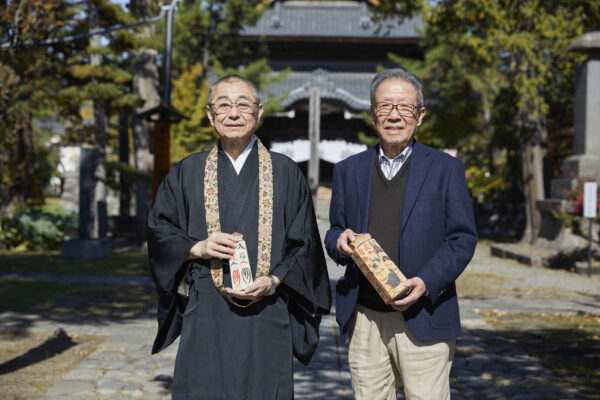
Shioiri Homichi, head priest of Shinano Kokubunji (left)
Kanai Noboru (right) Vice-chairman of the Yokkado Festival Task Force Committee, Shinano Kokubunji Reconstruction Association
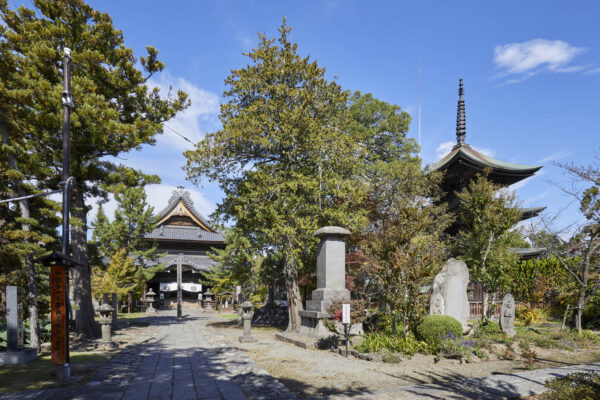
▲The grounds of Shinano Kokubunji Temple, which is home to the main hall (Yakushido) and three-story pagoda designated as a national important cultural property. The three-story pagoda was built in the mid-Muromachi period and is considered to be the oldest of Kokubunji temple towers.
Shinano Kokubunji Temple in Ueda City was built in 741 at the request of Emperor Shomu during the Nara period. As a central figure in the region, it has been worshiped by the people over its long history, and is popular in the local area as "Yokkado."
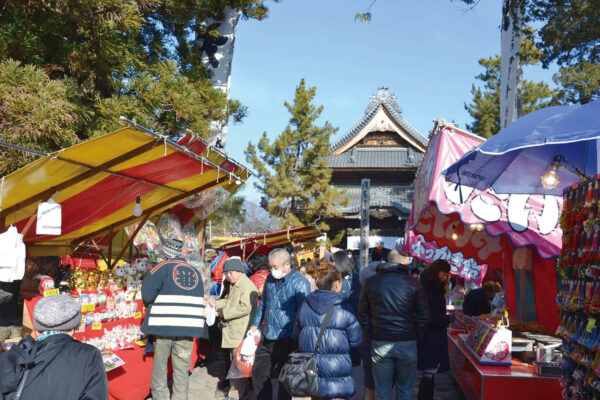
The Yokkado Festival is held every year on January 7th and 8th. Daruma City and street stalls line the area, and many visitors from within and outside the prefecture visit the shrine for the first time in the year. The "Somin Shoraifu" is amulet that is distributed at this time, which prays for the warding of evil, elimination of epidemics, and prosperity of descendants. There are two types: one that will be prepared at the temple and one that will be called "Sumin Ko" with illustrations of the Seven Lucky Gods, made by local people, and many people are looking for it.
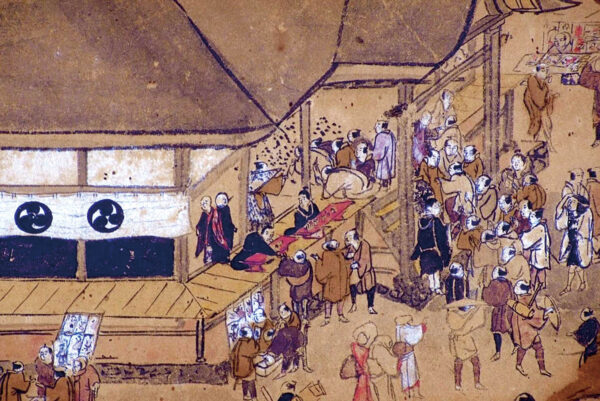
▲An enlarged view of the Yokkado Festival Map, a cultural property designated by Ueda City. On the veranda of the main hall, Sumin Future Comic, which is almost the same shape as the present, is being distributed. The Yokkado Festival has currently been selected as a nationally selected intangible folk cultural property as "The customs of Sumin's Future Comfort Distribution in Yokkado, Ueda City."
The "Sumin Future Comic" is introduced in temples and shrines all over Japan in the form of paper tags and wooden amulets, but the ones from Shinano Kokubunji Temple are very distinctive, with their hexagonal plaster kokeshi-shaped patterns. According to the ancient document "Gouzu Tenno no Festival" (1480 shot copy) held by Shinano Kokubunji Temple, it was already distributed in the Muromachi period, and from the "Yokichido Festival Map" (stored by Shinano Kokubunji Museum), which depicts the Yakichido Festival at Shinano Kokubunji Temple in the early Edo period, it can be seen that it was a great success, with a square prism shape that looks like it is today, and it was sold from the morning of the 8th.
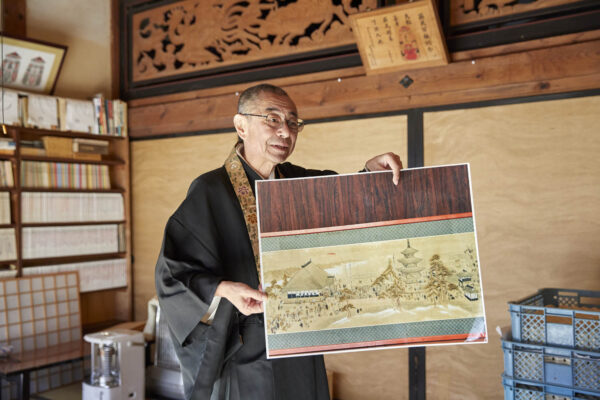
▲Head Priest Shiori explains with a copy of "Yakkado Fairy Map" in hand. Already since the Edo period Nagano In the northern part of the prefectureIiyama CityIt is said that they have visited from far away, such as Kita Gunma.
"Apart from the three-story pagoda of Shinano Kokubunji, the origin of the Yokkado festival, is unknown, as there are no historical documents left, but it is estimated that with the development of the monetary economy, the city naturally emerged and adopted the folk belief in the Sumin Future True. The changes in the shape of the Sumin Future True are not clear, but the world has settled down in the Edo period, and farmers have the opportunity to make Sumin Future True, and the shape has been developed into an elaborate three-dimensional shape."
This is what Shioiri Homichi, head priest of Shinano Kokubunji.
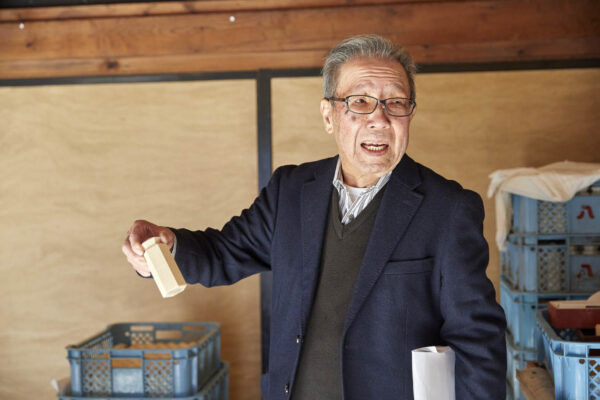
▲ Kanai has been selling pictures of his father's paintings at Yokkado Festival since he was in junior high school, and has been selling them at food stalls, and gradually he has been drawing them as a sample of his father's paintings for 60 to 70 years. The one in his hand is the Sumin Future Mark on a white wood before it was drawn
Also, when I heard from my father, when Shinano Kokubunji Temple was rebuilt during the Edo period, the current roots of Suminkoku and Esumin were the fact that the farmers from the village who cooperated with me were allowed to distribute Esumin." Kanai Noboru, one of the 88-year-old members of the Somin.
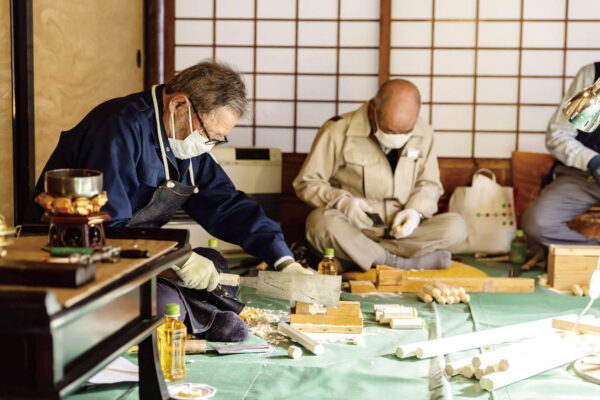
▲They are mainly hand-made into hexagonal pillars, and letters and patterns are written in red and ink, and then prayers are distributed at the main hall before the festival.
Ancient documents that describe the past states retain the names of 35 houses of Suminko, and according to Kanai, it is estimated that most of the area was Suminko in the Edo period. The tradition of painting has been passed down from generation to generation, and Kanai also works hard to create Esumin using techniques inherited from his father.
"It's surprising because you draw in ink without any sketches, but the pictures of the Seven Lucky Gods are clearly contained in your mind so you can naturally draw them. Some of Sumin's lecturers add pictures of Olympic emblems and bullet trains depending on the social situation," says Kanai.

There is a limited number of books available for Yesumin, and currently there are 63 books per house, with 10 large books, 23 medium books, and 30 small books. On the other hand, only 11 other establishments continue to produce Esu Min today. As the lack of successors is becoming a challenge, the temple is gradually expanding its doors, with the use of planting trees of the logs of the material, and with nearby parishioners preparing the Sumin Future Moto prepared at the temple to help with the production of the "semi" Sumin Kyouku.
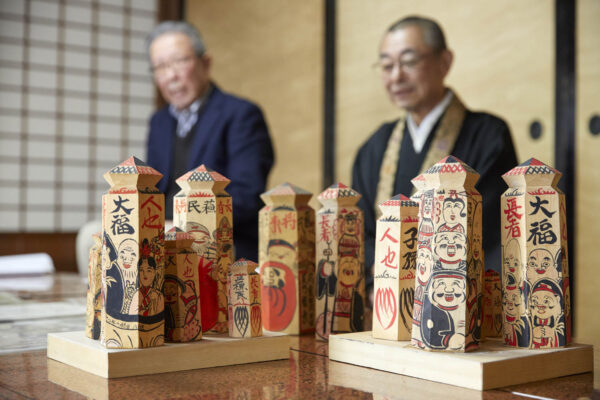
"They's white wood is not noticeable, and they are soft and easy to process, and literature written in the 15th century shows that they use willow trees for Sumin Future True. However, in recent years there has been a shortage of willow trees that grow naturally in the mountains, so in 1993, with the cooperation of the Ueda Forestry Station at the time, they formed a union, and planted about 30,000 seedlings in the local mountains. Many people say that the year has not started unless they ask for Sumin Future True True for New Year. Recently, it has been featured in the media, and some people come from the metropolitan area to buy them. In order to meet this sentiment, we would like to continue to distribute them while maintaining traditions." (Head Priest Shioiri)
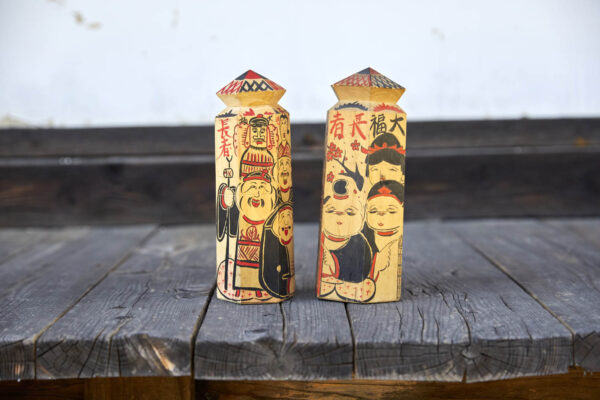
It seems that there are families in the area who have been carefully collecting the Somin Future True from the Edo period. In conjunction with the annual "Yokkado Festival," Shinano Kokubunji Museum also exhibits Sumin's future notes from the area that have been around since the Edo period, as well as the 11 still-existing Suminko paintings from the 11 still-existing Suminko festivals. The adorable hexagonal plasm shaped talisman is also a place to support the hearts of local people.

Shinano Kokubunji
Address: 1049 Kokubun, Ueda City
phone:0268-24-1388
https://www.shinano-kokubunji.or.jp/
*This article is information as of December 2023.















